December Forex Seasonality Sees USD Strength into Year End
Talking Points:
- December has been a bullish month for the USDOLLAR Index for three straight years.
- The Japanese Yen typically has suffered in December during the QE era.
- S&P 500 in midst of bullish stretch (September to April) and Q4 has proven the strongest seasonally.
See the full rundown of seasonal patterns broken down by currency pairs below, and to receive reports from this analyst, sign up for Christopher’s distribution list.
The beginning of the month warrants a review of the seasonal patterns that have influenced forex markets over the past several years. In our previous study, we decided to once again focus only on recent performance during the QE era of central bank policies (2009-present).
For December, we continue to focus on the period of 2009 to 2013. The small sample size is not ideal, and we recognize that there is increased statistical stability with using longer time periods. However, because of the specific uniqueness of the past 5 years relative to any other time period in market history – the era of quantitative easing – we’ve elected to attempt to increase the stability of the estimates with the shorter time period.
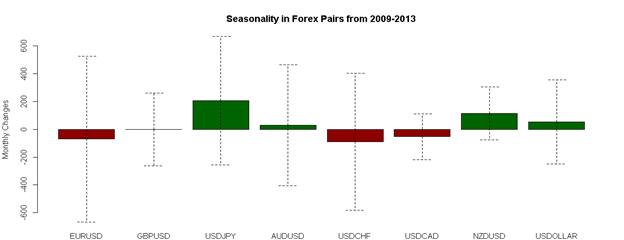
In the QE era (which is now over in the United States), December has proven only to be a mildly bullish month for the US Dollar. December is the second in a string of four consecutive months of seasonal gains (November-February), and gains have developed in each of the past three years.
Forex Seasonality in the Euro
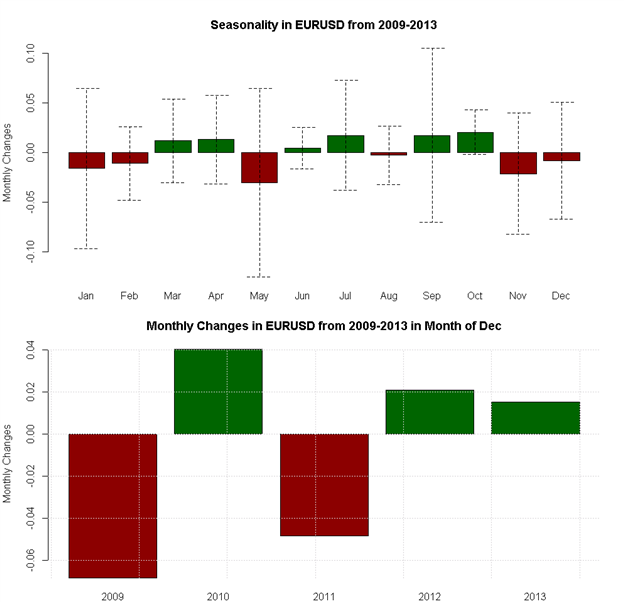
Euro seasonality is mixed in December. While December on average over the past five years has produced losses in EURUSD, gains have come in each of the past two years, and three of the past five overall. Outsized losses in 2009 and 2011 weigh down the seasonal average here.
Forex Seasonality in the British Pound
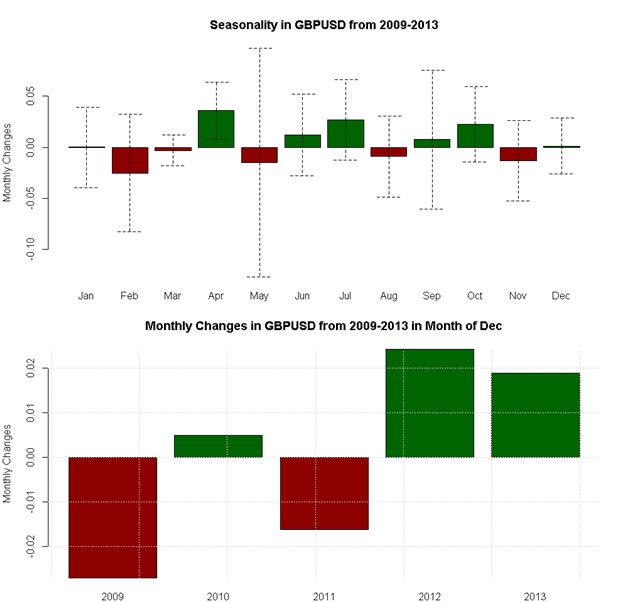
Like with the Euro, British Pound seasonality is mixed in December as only a slim, bullish average exists. Gains have come in each of the past two years amid low volatility (December has had the second smallest range of any month over the past five years); a significant move higher or lower would come as a break from recent trends.
Forex Seasonality in the Japanese Yen

We’re in the midst of the best stretch of the year for USDJPY, and if QE era seasonal patterns are accurate, it should be smooth sailing until March. December has been the strongest month among rather bullish Q4 seasonal trends, which could be bolstered by the fact that USDJPY has been outperforming its seasonal trends going back to August.
Forex Seasonality in the Australian Dollar
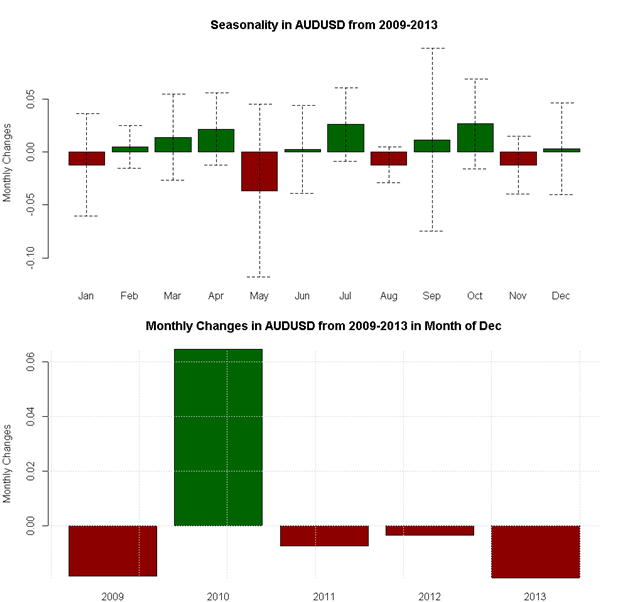
Although December is seen as a mildy bullish month for the Australian Data, a deeper look at the data shows why outliers must be sought out. AUDUSD has lost ground in four of the last five years, and but for a massive rally in 2010, the December seasonality skew would be negative.
Forex Seasonality in the USDOLLAR
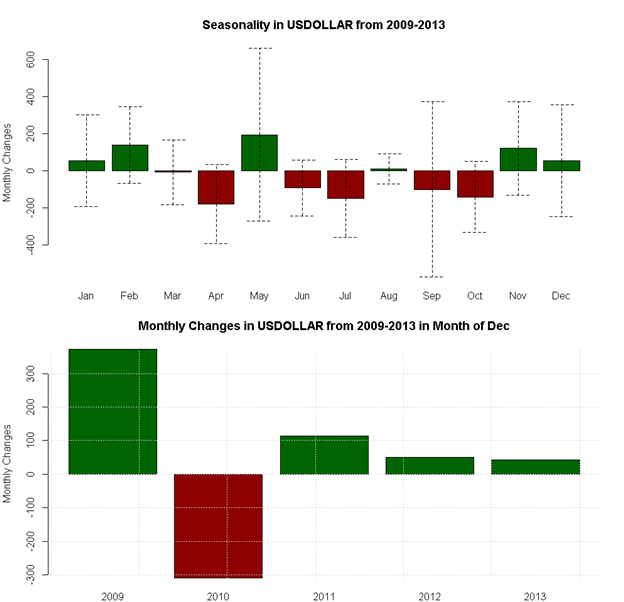
December seasonality calls for the second in a string of four consecutive months of gains for the USDOLLAR Index. Given the breakdown of the individual components of the index, another bullish December outcome likely hinges on the performance of USDJPY.
Forex Seasonality in the New Zealand Dollar
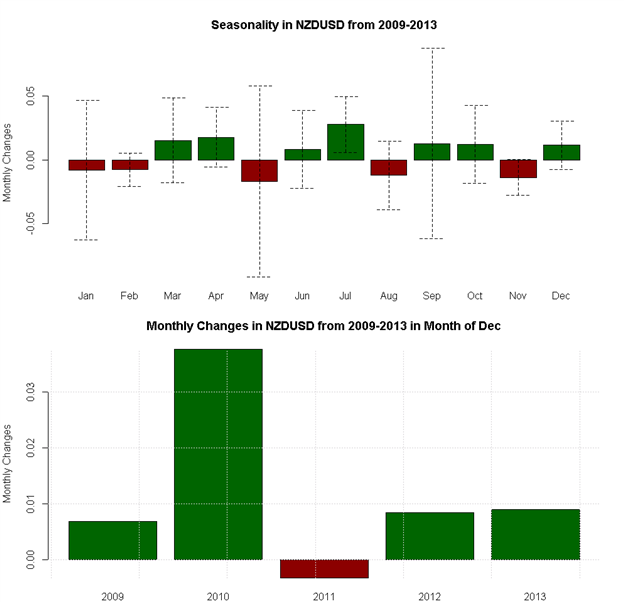
The New Zealand Dollar has found December to be quite positive over the past few years. While not in the top three months of the year in terms of average gains, December has been consistently positive for NZDUSD, with gains come in four of the past five years. Any shot of a NZDUSD recovery might have its best chance now, as seasonal trends favor losses in January and February.
Forex Seasonality in the Canadian Dollar
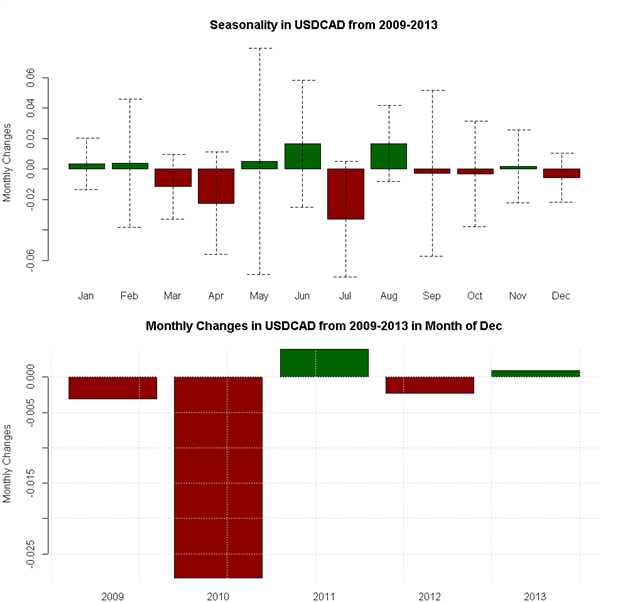
Seasonality favors a slightly stronger Canadian Dollar in December, though given USDCAD’s year-end seasonal statistics and recent December performances, we are adopting a neutral outlook. But for a massive sell-off in December 2010, recent years have offered little by way of gains or losses in the pair.
Forex Seasonality in the Swiss Franc
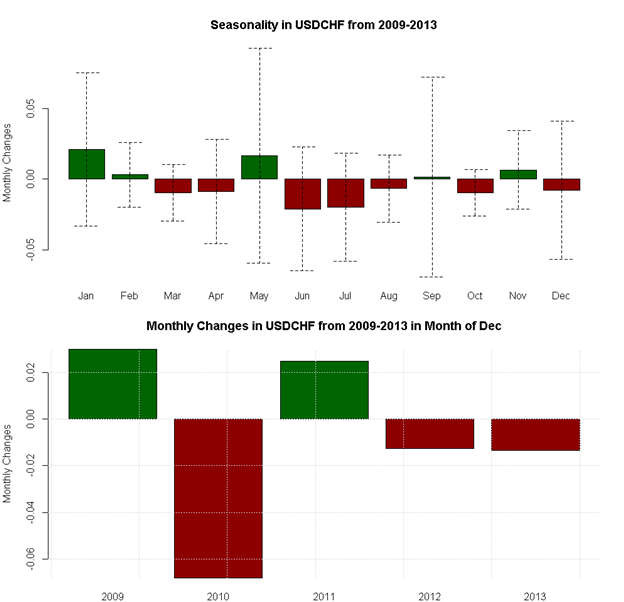
Seasonality favors a weaker USDCHF in December. While skewed by the 2010 performance, USDCHF has lost ground in each of the past two years. Given the strong inverse correlation with EURUSD (-0.96 since September 6, 2011, when the SNB raised the Sf1.2000 floor), USDCHF is more likely to follow EURUSD than its own seasonal tendancies.
Seasonality in the US S&P 500 Index
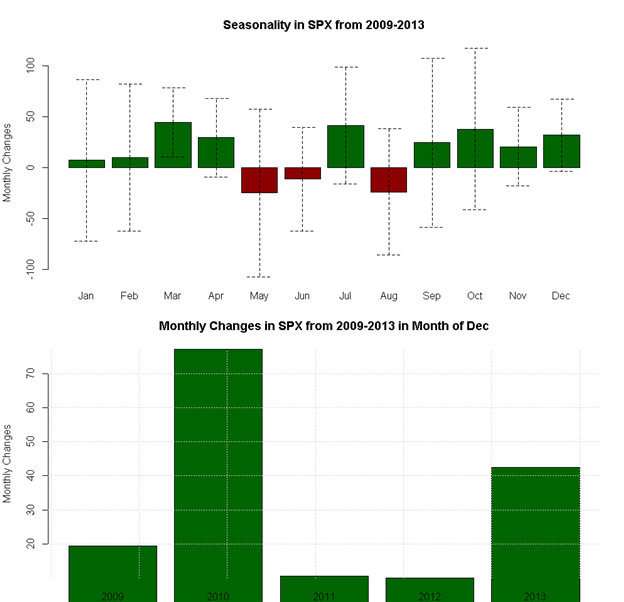
We’re in the midst of the best stretch of the year for US equity markets, month four of an eight month bullish seasonal trend during the QE era. Gains have come in each of the past five years, meaning a break of the trend will likely come as a surprise – and if it does occur, in an aggressive manner.
Seasonality in Gold (XAUUSD)
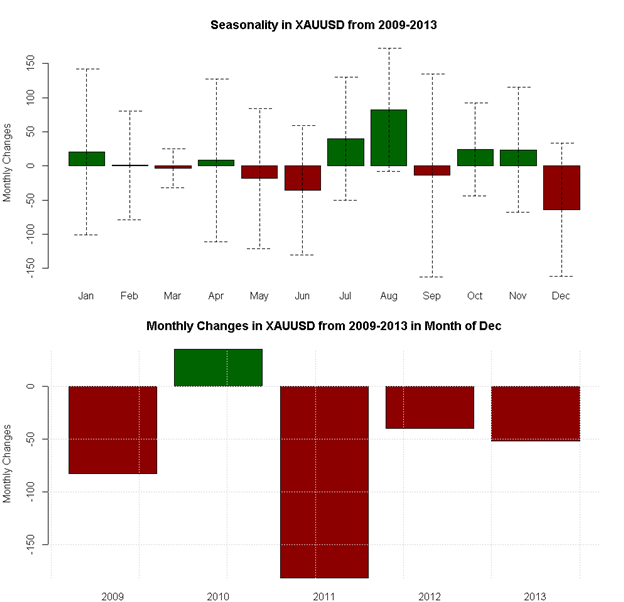
December is the worst month of the year for Gold. Losses have come in each of the past three years and four of five overall. Gold disappointed its seasonal tendencies in both October and November, amplifying the potential impact of the negative seasonal trend.
--- Written by Christopher Vecchio, Currency Strategist
To contact Christopher Vecchio, e-mail [email protected]
Follow him on Twitter at @CVecchioFX
To be added to Christopher’s e-mail distribution list, please fill out this form
original source






 Indonesia
Indonesia